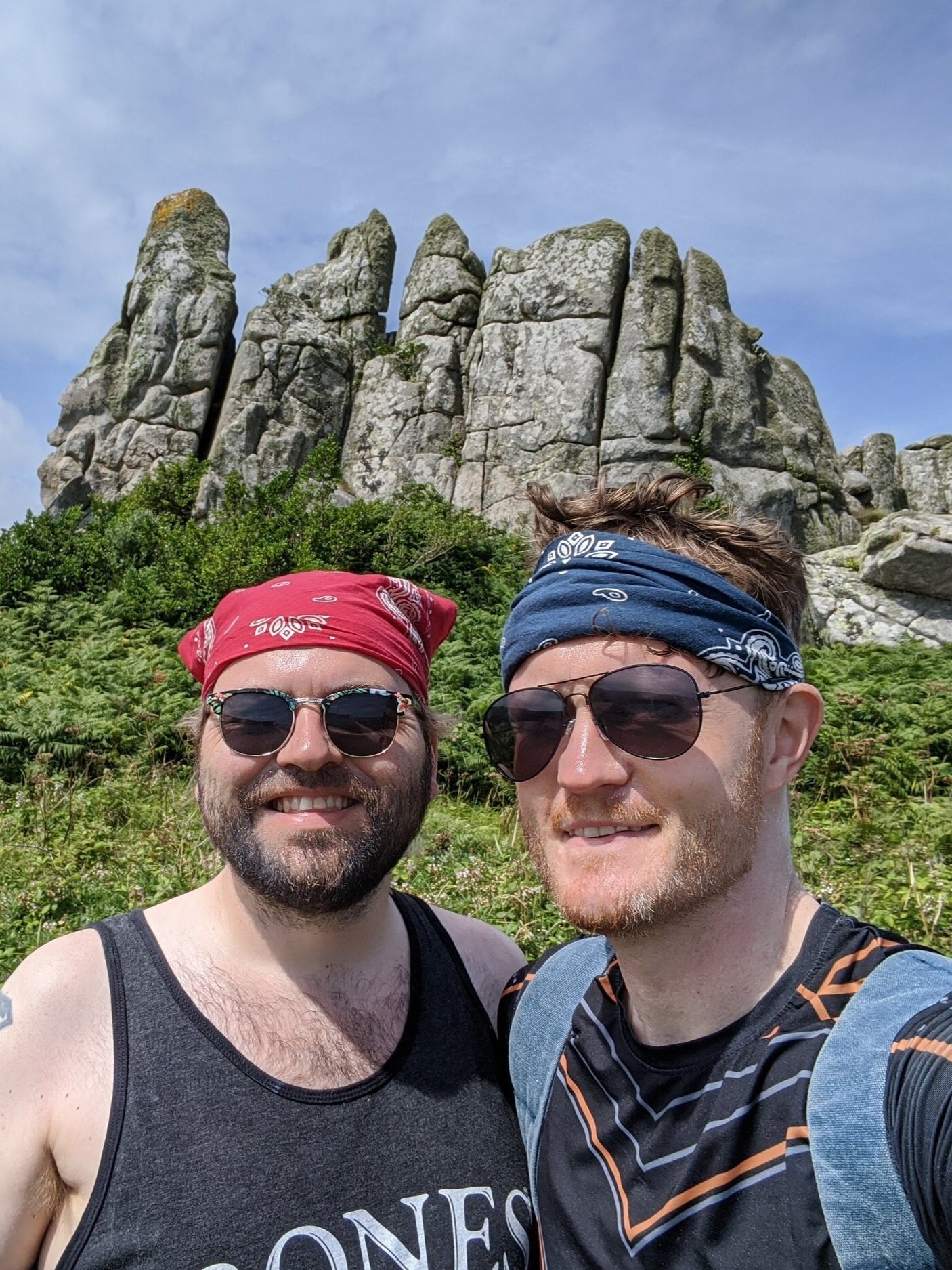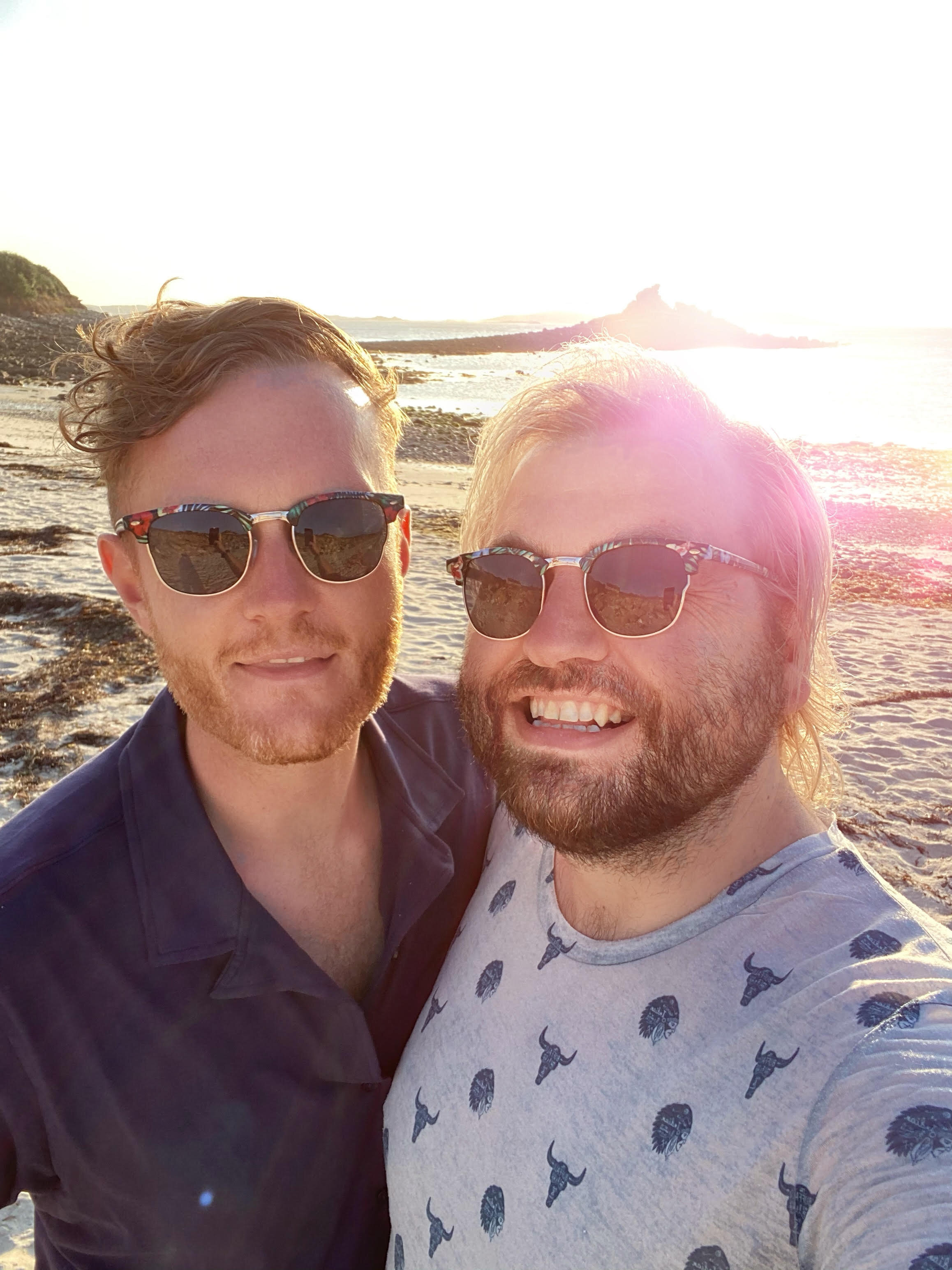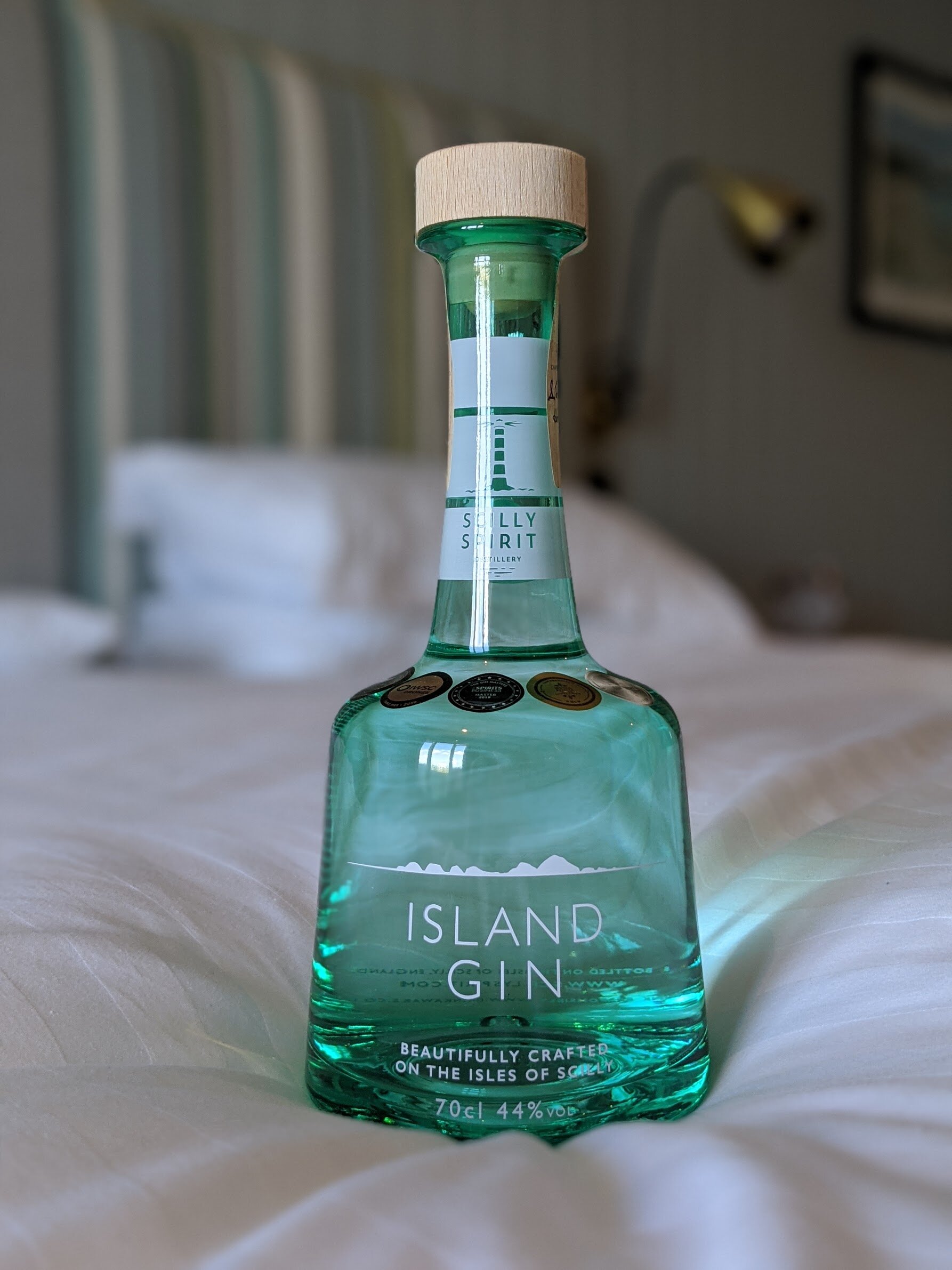Exploring the Isles of Scilly

We have written these blogs so they can be enjoyed independently or in sequence. If you want to start at the beginning, click here: https://www.havehusbandwilltravel.com/adventures-1/2020/8/3/a-week-in-the-isles-of-scilly
Regular readers of this blog will already know of our penchant for Disney, having visited all of parks around the world. While it’s hard to think of something more ‘artificial’ than a Disney theme park, with its densely-packed concentration of attractions, the Isles of Scilly has a similar intensity - if you go looking for it, which we did.
By most people’s definition of an ‘island’ there are around 50 of them in the Scillies archipelago. Only five are inhabited (there’s a sixth if you count the small island of Gugh which is - sometimes - attached to St. Agnes, see below). Many of the others can be visited, although those with protected species of birds are closed to visitors (on foot at least) from April-September.
We like to walk on holiday. We aren’t very good at sitting down on a beach for hours at a time, or sitting anywhere for that matter. But even David thought he was being a tad too optimistic in packing hiking books. After all, how much walking could we do across an island range that measures only just over six square miles?
More than 60 miles later, we were glad we packed decent footwear.
The largest of the islands is St Mary’s and It’s a 10 mile walk around the coastal perimeter. If you are able to, we strongly recommend doing the whole thing. It’s not especially tough underfoot (a supportive pair of trainers will suffice if you don’t have walking boots) and the sensory rewards are utterly worth it. The scenery varies so frequently that you quickly come to expect something awe-inspiring, to the point that you feel you might be in danger of being disappointed if there isn’t a new surprise around the next headland. Fortunately, we were never disappointed. Going clockwise from Hugh Town, we saw: the remains of a 16th century fort; verdant fern-filled slopes dotted with purple heather and crested with trees like something out of Jurassic Park; ruins of a 2,000 year village, Anglo-Saxon burial chambers; idyllic sandy beaches with Caribbean-clear waters; a church and graveyard with a complement of drowned sailors (and a former Prime Minister); a lighthouse and granite tors of every shape and size. Even that list barely scratches the surface. Where else do you get to cross the runway of a fully operational airport (don’t dawdle as you walk across and wait if the light is red because a landing/take off is imminent)?
Being the urbanites we are, our knowledge of the names of plants and animals is quite limited. Our upbringings in the West Midlands, as far from large bodies of water as you can get, were hardly like those depicted in the novel Swallows and Amazons. This makes trips to the seaside particularly exciting for us. Perhaps those who grow up in the Scillies just get accustomed to their preposterously bucolic surroundings? But for us, the Scillies went beyond mere visual interest. We found them to be unexpectedly dramatic. That was the word we eventually settled on, halfway around St Mary’s. We repeatedly found ourselves trying to make sense of the landscape using cultural reference points familiar to us which, in our case, are books, movies and video games. As well as the aforementioned Jurassic Park, The Lord of The Rings and The Legend of Zelda: Breath of the Wild sprang to mind on multiple occasions as we were bounding over rocks and setting course for the next outcropping. And yes, this almost feels like heresy to type, but also Disney.
It’s almost as if St Mary’s has been designed like a Disney theme park to be as dramatic as possible. Disney parks are planned around what they call ‘weenies’, landmarks to help you wayfind your way around the park, drawing your eye to the next set of attractions. They’re often vertical and cylindrical (a central castle being the most obvious example) and the Scillies have plenty of things which fit this description, including some which are man-made (such as the lighthouses) but most of which have been formed naturally over centuries and millennia. Unlike in a Disney park, you can enjoy them without having to battle with hordes of people. We crossed (socially distanced) paths with no more than a couple of dozen people the whole time we walked around the coast of St Mary’s. Even the beaches were practically deserted.
As well as decent footwear, it’s a good idea to pack beach wear, and not just on St Mary’s. The beaches on all the islands we visited are seriously tempting, even for people like us who have a short attention span when it comes to lazing around on warm sand. The crystal-clear turquoise waters are very inviting. At times we found ourselves having to pinch ourselves that we weren’t in the Caribbean. Of course, we were shocked back into reality as soon as we stepped into the water, the temperature being the only thing not comparable with the Caribbean.
While it’s next to impossible to get lost (just keep the sea on the same side and you can’t really go wrong), we found Paddy Dillon’s Walking In The Isles of Scilly invaluable for pointing out items of interest we might otherwise have missed. It’s available online before you go as well as from local shops when you get to the Scillies themselves.
One of the most interesting aspects of our adventures on the islands was something we’d not really considered before we placed our feet firmly back on land at Hugh Town quay: changing sea conditions (and weather) can sometimes change how easy it is to get between the different isles in the archipelago. Lots of the bars, restaurants and hotels have back this up with paintings and photographs and shipwrecks from centuries past, and so we became accustomed to a brief walk down to the quay each morning to check the chalkboards of the Boatmen’s Association as to which islands they were travelling to each day and what times they were setting out.
Luckily, other than our first day when we arrived on the island through rough waters the rest of the week was fairly calm in terms of storms and poor weather, meaning that each day we had our pick of the islands to travel too. Monday’s poor weather and storms meant that the Boatman Association were really only running select voyages through to closest islands to St Mary’s - Tresco and Bryher - with no evening “supper boats” or wildlife safaris to the Eastern Islands either.
Although we had a general plan of attack to which islands we’d prefer to visit on which days, there was something quite mindful and refreshing knowing that we might just have the decision taken away from us and would need to get on with what we were given. It became a really enjoyable morning ritual to check where the boats were going and to buy our tickets (£10 per adult for a return to one of the islands with face coverings required to be worn at all times during the crossings which never exceeded 20 to 30 minutes in length).
Our first visit to another island was to Tresco, the island in the group which, perhaps other than our home base of St Mary’s, is the one which most people flock to, with its notable attraction, the Tresco Abbey Gardens, being a must-see whilst you’re in the Scillies.
Even though it was only the second of five islands we visited during our six-day stay (we very briefly visited a sixth, via transfer boat to Bryher), we could feel immediately that Tresco felt more developed. In our short walk from New Grimsby Quay, following signs for the Abbey Gardens, we passed through more modernly paved streets and buildings than we’d seen yet in the Isles, highlighting the higher proportion of luxury holiday homes and resorts.
It didn’t get in the way of the views, though, with both of us experiencing overstimulation when it came to the landscapes we were witnessing for the first time. English country gardens gave way to italian riviera farmhouse views and then to deep south bayous with all the trimmings you’d expect, including the picturesque Spanish moss.
Tresco Abbey Gardens did a similar number on us with the island's signature purple Agapanthus and black Irish Rose joined in expertly tended gardens by plants, trees and flowers from every continent in the world (other than Antarctica, obviously!) which is all made possible due to the sub-tropical climate and limited frost that the Isles of Scilly enjoy.
After an hour or so around the garden, we continued our walk around Tresco’s coastline, sampling some lovely local ice cream (made in neighbouring St Agnes, below) in the gift shop on the way out. As before, we continued to be stunned by the landscape - forests with sequoia like trunks slowly giving way to heather-filled moors that made you think you were in the Scotish highlands, rather than Cornwell.
Later still things took an even more bizarre but delightful visual turn when Civil War era forts and ruins suddenly overlooked powder white sand beaches framed with Caribbean-like crystal clear turquoise seas. We were travelling the world in this ever-changing landscape without ever moving off this island which is only just over 1 square mile in size. We didn’t know it then, but it was to be an experience we would continue to have all week on the other islands.
St Agnes looks tiny on a map but it packs in its fair share of drama. This is in no small part to the fact that a visit here can involve two islands and, if you want to explore both, you will be involved in a race against time.
St Agnes itself has a population of around 80 people. The island of Gugh next door has just two houses. St Agnes and Gugh are connected by a thin strip of sand and rocks - at low tide at least. Our boat captain taking us to St Agnes told us the bar across to Gugh would start to be covered by the incoming tide at about noon. We arrived around 10.30. That gave us just enough time to complete a circuit, stopping occasionally to marvel at the landscape, similar to St Mary’s but also uniquely different. Walking through a veritable jungle of ferns, growing up to head height, was a particularly novel experience for us.
By the time we were circling back to St Agnes, we could see how much the bar had already been covered. If we had been five minutes later we wouldn’t have been able to cross without getting our feet wet. Not everyone had timed it so well, or perhaps they did it on purpose so they could enjoy wading through freezing cold water.
St Agnes itself is a charming little island with a disused lighthouse always visible (a Disney wienie if ever there was one, albeit one that has stood, unused, since 1911). Even more striking are the startlingly large rock formations. At times, in the shadows of massive granite tors, it felt like we had stepped into a land of giants. The boulder-strewn slopes surround numerous bays, including the amusingly named Wingletang. On the way back to the quay we walked past Troytown Farm (source of the ice cream sold across the islands), the distillery behind one of the locally-produced gins (see the upcoming Food and Drink piece) and stopped at the Turk’s Head, the most south-westerly pub in the UK, where we had a very satisfying lunch.
By the Friday of our trip, we really only had St Martin’s left of the islands we could comfortably fit into our trip, but by this point we’d already walked over 50 miles since arriving on the islands just five days before. Friday morning saw clear sunshine quickly turn into deep mist which never really lifted until late into the afternoon we were back on St Mary’s.
The Isle of St Martin’s is the most northern of the Scillies and, as of the last census, has only 136 permanent residents who live between the three main settlements Higher Town, Middle Town and Lower Town. As newbies to the island, this was somewhat of a confusing naming convention as Higher Town was actually more southerly than Lower Town on the map and led to the first time we got lost on our coastal walks all week.
Whether it was the mist or our tiredness from walking such long distances all week, we both found St Martin’s to be difficult to navigate. It felt much more wild, with overgrown paths, walking routes going right up against sheer cliffs and constantly changing altitudes.
The vistas also did not feel as varied as some of the islands either with ferns and bracken making perennial appearances along the walk. That being said, we still walked past interesting sites, like farms, a vineyard and a massive garden where flowers are grown to be shipped back to the mainland, and, like the other islands, there are still some fantastic bays and beaches to experience too.
I think by this point in our trip though, we were experiencing sensory overload - we’d tasted great food and drink and seen sights that didn’t seem to be possible to be seen in England whatsoever. And we had experienced most of these through expending a good amount of shoe leather too!
Is it possible to have too much of a good thing? Had we become glutted with the spectacle of the Scillies? Was it time to return to something less dramatic to cleanse our palette?
Before we left, we made a list of the things we’d not managed to cram into our first visit. It was a surprisingly long list and it made us wish we had another week to play with, perhaps to take things a little more slowly.
Our first visit to Scilly certainly won’t be our last. After just a few days being back at home, palettes cleansed and legs recovered from walking 10 miles a day, we’re already craving our return trip.

















